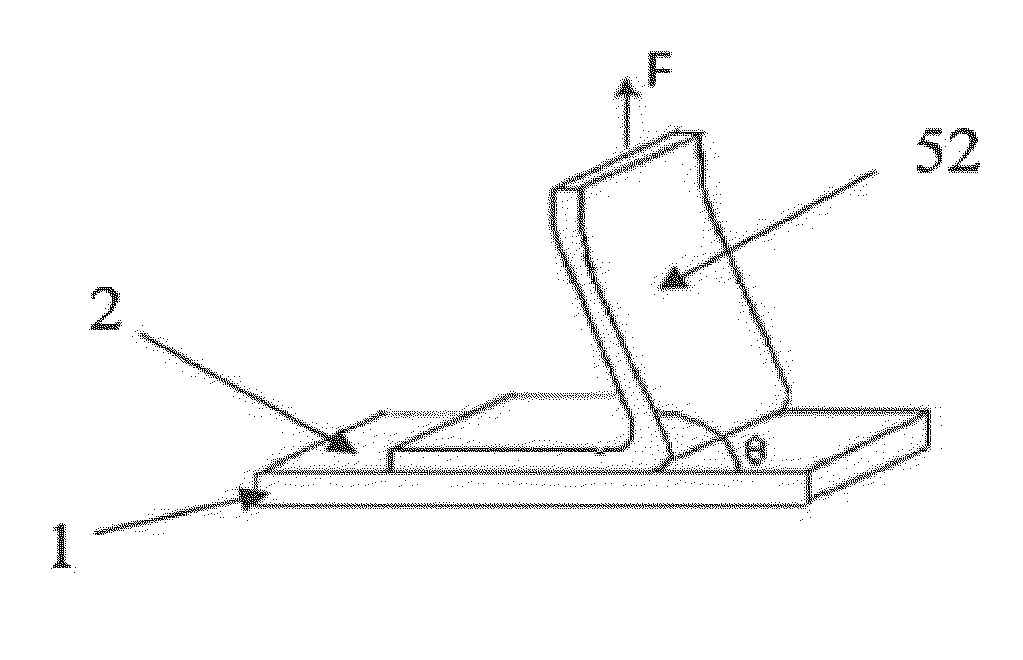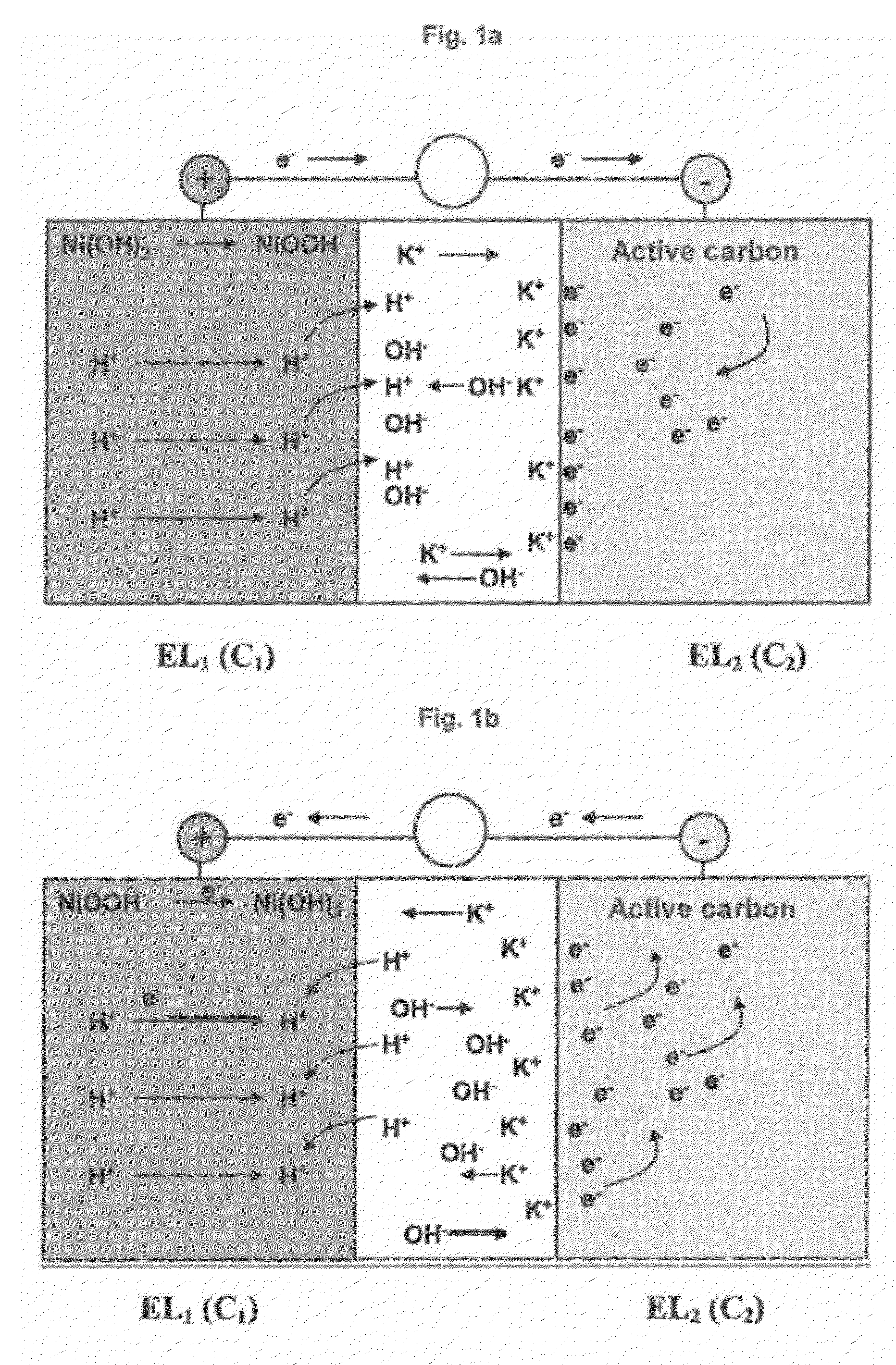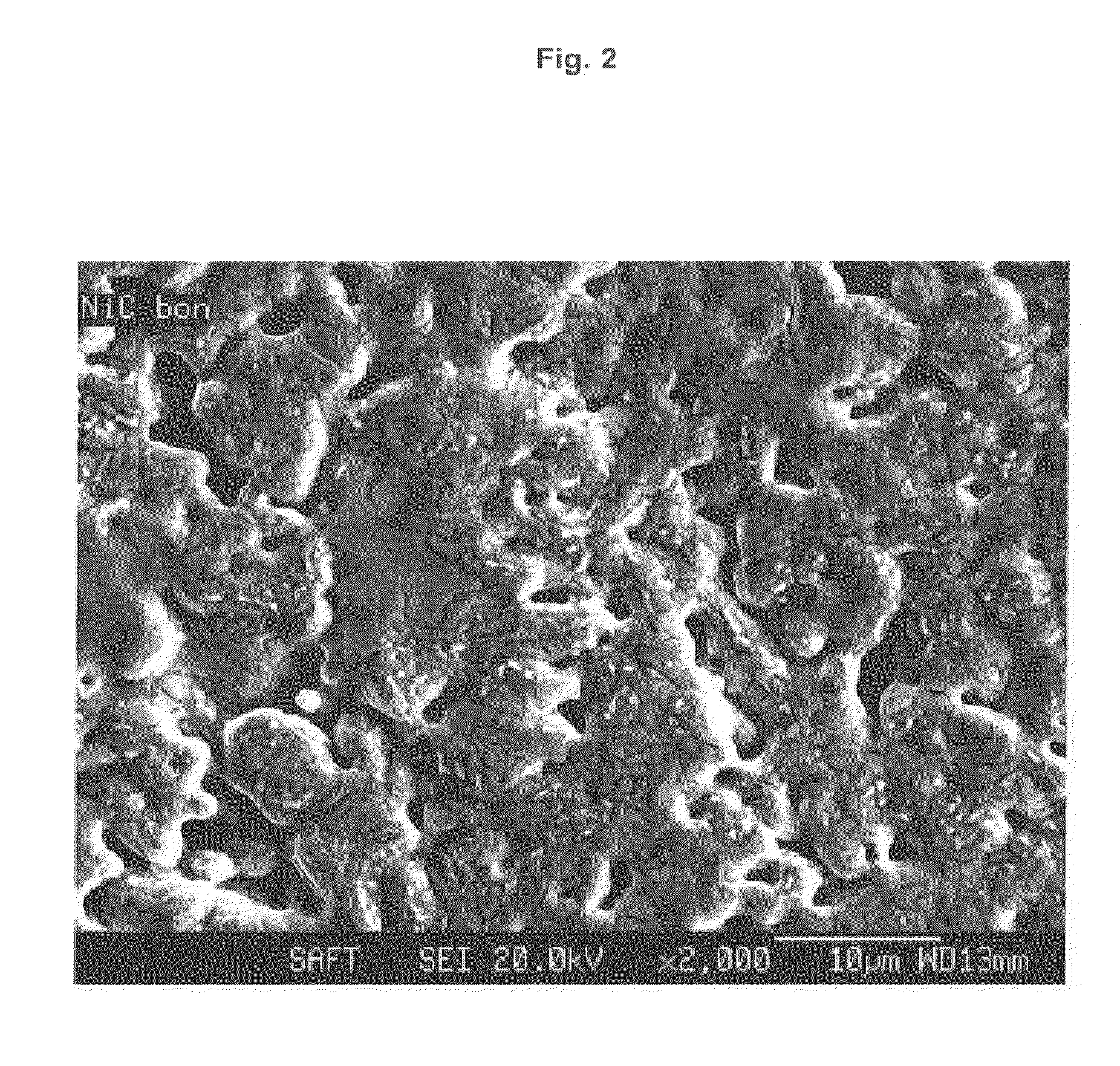Negative electrode for asymmetric supercapacitor having a positive electrode based on nickel hydroxide and an alkaline electrolyte and method for making same
a technology of asymmetric supercapacitors and negative electrodes, which is applied in the manufacture of capacitors, electrolytic capacitors, conductors, etc., can solve the problems of complex assembly of asymmetric supercapacitors, asymmetric supercapacitors, and high cost of asymmetric supercapacitors, so as to simplify the assembly of the electrochemical system of invention, reduce the cost of production, and improve the effect of voluminal and mass capacitan
- Summary
- Abstract
- Description
- Claims
- Application Information
AI Technical Summary
Benefits of technology
Problems solved by technology
Method used
Image
Examples
examples
[0093]Three current collectors are provided, a first so-called smooth current collector and two current collectors according to the invention of different roughnesses. The current collector is said to be smooth if its primary roughness Ra1 is less than 0.8 μm. Primary roughness Ra1 and secondary roughness Ra2 have been measured with a scanning confocal microscope. The measurement method is illustrated by the diagram of FIG. 4. The results of the obtained roughness measurements are shown in Table 2.
TABLE 2Primary and secondary roughness measurementsType of nickel-basedPrimary roughnessSecondary roughnesscollectorRa1 (μm)Ra2 (μm)So-called smooth collector0.730.11Collector according to the2.340.21invention (high roughness)Collector according to the1.230.10invention (lower roughness)
[0094]Coating adhesion on each of the three current collectors is evaluated by a mechanical test designated “cross-cut adhesion test” described in standard NF EN ISO 2409 and illustrated by FIG. 5. The measu...
PUM
| Property | Measurement | Unit |
|---|---|---|
| length | aaaaa | aaaaa |
| length | aaaaa | aaaaa |
| roughness Ra1 | aaaaa | aaaaa |
Abstract
Description
Claims
Application Information
 Login to View More
Login to View More - R&D
- Intellectual Property
- Life Sciences
- Materials
- Tech Scout
- Unparalleled Data Quality
- Higher Quality Content
- 60% Fewer Hallucinations
Browse by: Latest US Patents, China's latest patents, Technical Efficacy Thesaurus, Application Domain, Technology Topic, Popular Technical Reports.
© 2025 PatSnap. All rights reserved.Legal|Privacy policy|Modern Slavery Act Transparency Statement|Sitemap|About US| Contact US: help@patsnap.com



